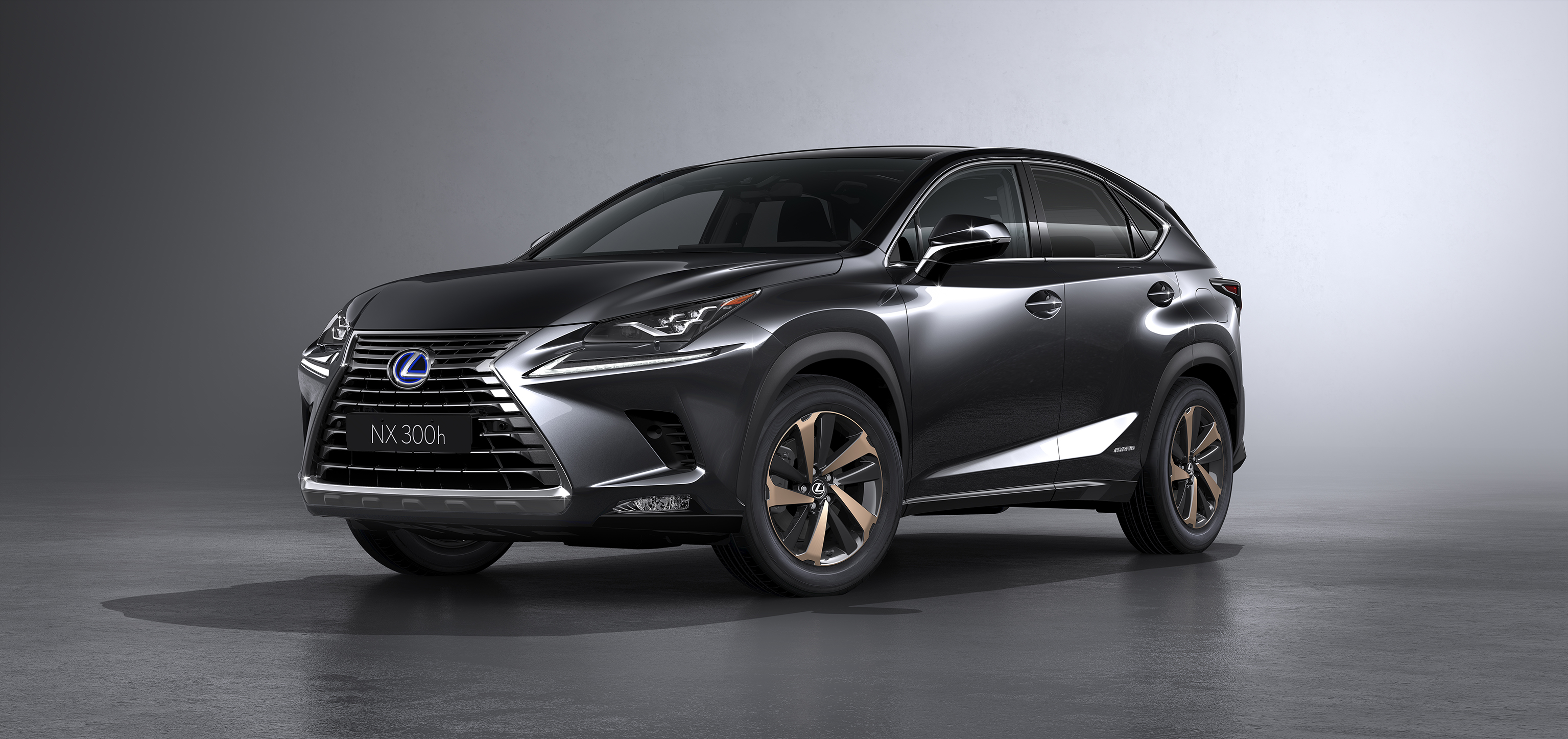
Competition in the midsize crossover segment is only getting intense with the new Volvo XC60, Audi Q5, the Mercedes GLC and the upcoming BMW X3. But, if you want something distinct and truly unique, Lexus has the answer in the form of the NX 300h. The NX 300h is the Lexus’ fourth offering in India after the ES 300h, RX 300h and LX450d. The NX 300h is based loosely on the Toyota Rav4 which it borrows some of the underpinnings from. Introduced globally in 2014, it has enjoyed quite some success in the United States and European markets. In India, it is the stepping stone to the Lexus range and we have a brief stint at finding how good it is.
For a start, the styling is radical for an SUV and quite a big departure from the European competition. Everywhere that you look, there are sharp cuts and creases that add to the sophistication. The large spindle shaped grille is flanked by two sharp LED headlamps and independent DRLs on the aggressive looking bumper. The Luxury variant we tested had a layered grill with horizontal slats while the F sport variant gets a sportier mesh design. It also gets a different front bumper and different alloy wheel design. The 18-inch wheels look suitably large for the size of the car and apart from certain angles the NX is a great design from Lexus.
The interiors are well made and the quality is superb. The spindle theme is carried over to the centre console. The dashboard and most of the door pad trim are covered with quality synthetic leather. The switches and knobs feel solid and nice to use. There is brushed aluminium trim and contrast stitching in places. However, someone of the switchgear is from lesser Toyotas and plastic quality, in certain areas, isn’t up to the usual Lexus standards. The key fob, for instance, looks like it is from a last gen Toyota and isn’t fitting for a car that costs this much.
The front seats are comfortable and the cushioning is well judged, but the F-Sport variant gets seats that are even more supportive. The Luxury variant, on the other hand, gets ventilated seats -front and rear- while the rear ones get an electric recline feature. The rear seats are low set and lack under thigh support although leg room is adequate. It also loses out on headroom and most average adults will find it cramped at the rear. The boot is also small due to a raised floor which houses a full size spare wheel.
It comes loaded with features including eight way adjustable front seats, 360 degree camera, panoramic roof (it doesn’t open), heads-up display, wireless mobile charging, automatic headlamps, automatic wipers, electric tail gate, steering mounted paddle shifters etc. It also scores well on the safety front with eight airbags and an overprotective electronic stability programme. The 10.3-inch infotainment is controlled by a touch pad instead of the mouse-style controller seen in other Lexus’s. It also comes with a 14 speaker Mark Levinson audio system that delivers crisp mid-range and punchy bass.
The NX 300h is powered by the same 2.5-litre petrol engine that is under the hood of the Camry Hybrid and ES300h sedan. It runs on an Atkinson cycle instead of the traditional Otto cycle for more efficiency. In the NX, it makes 197bhp and 210Nm and has an integrated electric motor and yet another one for the rear axle to making it all wheel drive. The electric only range is only 2-3 km because it uses a low energy density Ni-MH battery in place of the usual Lithium ion ones in most hybrid and electric cars. The engine is mated to a CVT which is best suited to relaxed driving. The car feels at home in the city where it potters around silently and keeps up with bumper to bumper traffic with minimum fuss. On the highway, it does a reasonable job of maintaining a good cruising speed. It is when you want to overtake a fast moving car or give too much throttle that the CVT gearbox rears its ugly end, sending the engine revs high making it sound strained. You are better off picking up a relaxed driving style for this Lexus and it rewards by being sublime and friendly.
With its additional electric motors, battery pack and other hybrid tech, the small NX weighs almost 1.9 tonnes. Yet, it handles its weight quite well, being agile and feeling light at the controls. The adaptive dampers adjust their stiffness to suit varying road conditions and make it feel composed over most surfaces. The steering is on the light side, but it is precise and the ratio is rather quick. On the limit, the NX 300h feels front heavy with little or no assist from the rear motor. The brakes feel strong with regenerative braking, but the pedal feels lifeless and takes some getting used to. The overall ride quality is still on the softer side and you can sense the rear is a bit less composed than the front. It soaks up bumps easily and can tackle most bad roads.
The NX 300h is set to compete against the Audi Q5, BMW X3, Mercedes GLC, and Volvo XC60, but is more expensive than them all. With a cramped rear seat, tiny boot and noisy CVT, it sure is flawed; but it still has a lot going for it. It is the sportiest looking of its lot and the only hybrid in its class. It comes loaded with kit and is perfect for the urban environment. And, because it is a Lexus, it will cost a lot less to maintain than any of its competition and will be endlessly reliable. With the current market trend towards petrol and the future showing promise for hybrids, the NX300h may have its USP work out for itself.
VIVEK VENUGOPAL












